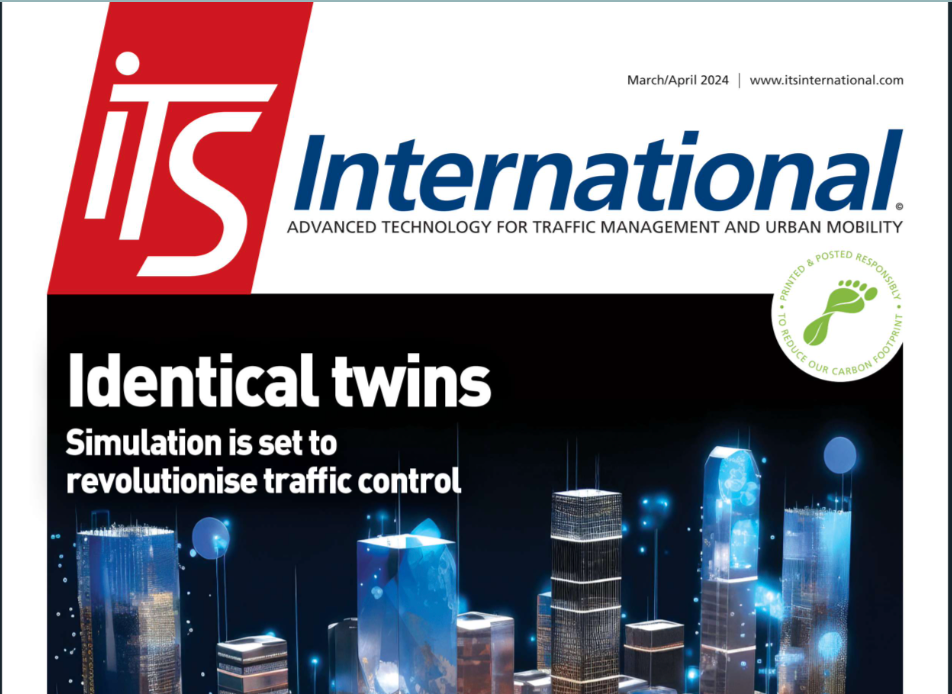The real case for driverless mobility
- Apr 14, 2024
- 4 min read
Updated: Apr 20, 2025
This blog post / book review provides highlights from an article written by Bern Grush, URF's Executive Director. The full article is published in the March/April 2024 issue* of
iTS International: Advanced Technology for Traffic Management and Urban Mobility
What will automated driving really be good for?
The advantages claimed for passenger vehicles controlled by automated driving systems (ADS) remain in the future. Some may be exaggerated, others are likely unreachable due to human preferences and fears, and still others are many decades away because of built environments, human habits and resistance to change. Our progress toward removing the human driver from road vehicles will be slower than anticipated, crammed with unintended consequences, and possibly never fully complete, implying there will always be some human-driven vehicles, even a century from now. This is a cultural and sociological observation, not a technological one.
The principal claim in favour of ADS deployment is safety—the potential to reduce crashes, injuries and fatalities. While I do not doubt this potential, and in fact some approaches to ADS development anecdotally appear to support this claim, experts such as Philip Koopman (Carnegie Mellon University) and Missy Cummings (George Mason University) argue that we have not yet collected enough data for a definitive understanding. It is also evident to the layman reading casual news articles that there still seems to be an unending supply of edge cases that ADS systems need to learn.
Variable human behaviour
Beyond the concern of these experts, when we compare the safety of common carrier vehicles equipped with fully-engaged ADS (Level 4) versus that of ADS-equipped household vehicles that may be engaged arbitrarily or under select conditions by their driver (Level 3), we have far too little sufficiently-reliable evidence to gauge the safety of ADS-equipped vehicles under private ownership.
Another claim frequently heard is that ADSs can optimise traffic flow, reduce bottlenecks and enhance overall road efficiency — i.e. smoother travel and less congestion for everyone. This would surely be true in an engineered environment in which all of the vehicles involved were under standardised ADS control, but no such environment yet exists, and no-one has worked out how to convert—and afford to convert—our existing mixed-driving environments with highly variable human behaviour, motivations, emotions and attention states behind the wheel.
Our progress toward removing the human driver from road vehicles will be slower than anticipated, crammed with unintended consequences, and possibly never fully complete.
Furthermore, if more people are able to own and use driverless vehicles, the increase in road traffic would negate this optimisation advantage. Hence, unless we address both private vehicle ownership and how we engineer road systems, it is hard to see how ADS can idealise traffic flow on real-world roadways.
Another favourite is productivity and convenience. Commute time becomes productive or less stressful when passengers can work, read or relax while their vehicle drives autonomously. Since this would hardly make any difference on short trips, it implies longer trips (which in turn implies more sprawl). Furthermore, the large majority of drivers, relieved of the task of driving, will tend to engage in social or entertainment activities as opposed to productive work or education. In other words, unless “productivity” means to engage in one’s favourite form of distraction or a nap, then this value case for automated driving is weak at best...

A new book by Alain L. Kornhauser and Michael L. Sena, The Real Case for Driverless Mobility (Elsevier, 2024), advocates for automated driving systems as a core component of public transportation — speci cally to provide access to underserved communities. This book is sourced from Princeton University’s long-standing and highly regarded Smart Driving Cars effort, which has for years advocated the intelligent application of automated vehicles to improve equitable access for mobility disadvantaged populations.
To paraphrase from its introduction:
Even where public transit is provided, a car is required for many of the regular trips persons of all ages must take. Understanding how and why cars have become the main ticket to a better life is the first step to addressing this problem. Unequal access to jobs, education, recreation and affordable, nutritious food is a direct cause of the social disorders that plague our communities. Those who can afford to travel to where the opportunities exist can take advantage of them. Those who are poor cannot, and the cycle of poverty continues.
Another uncomfortable observation
Kornhauser and Sena go on to make another uncomfortable observation. People currently being served in the initial roll-outs of robotaxi applications in US cities like Austin, Phoenix, and San Francisco are from demographics that generally already have affordable access to personal cars, ride-hailing or transit—often all three—implying that the robotaxi companies operating there are competing with existing and plentiful supply rather than offering any societal value by addressing transit deserts.

Filled with the reasons, methods and logic of addressing transportation inequity using driverless passenger vehicles, the Kornhauser-Sena book provides the reader with the history of how we got to so many mobility-starved populations, the purpose and value of solving this issue, and a roadmap to do so. I doubt you can read this and still turn your back on the evident best purpose of deploying driverless mobility to address one of the most egregious shortcomings of so many of our cities. [END]
*To read the full article, please visit: https://www.itsinternational.com/
Under their magazine tab, digital publications, here is the link to the March/April 2024 issue: https://digital.emagazines.com/its_international/20240408/index.html




Comments